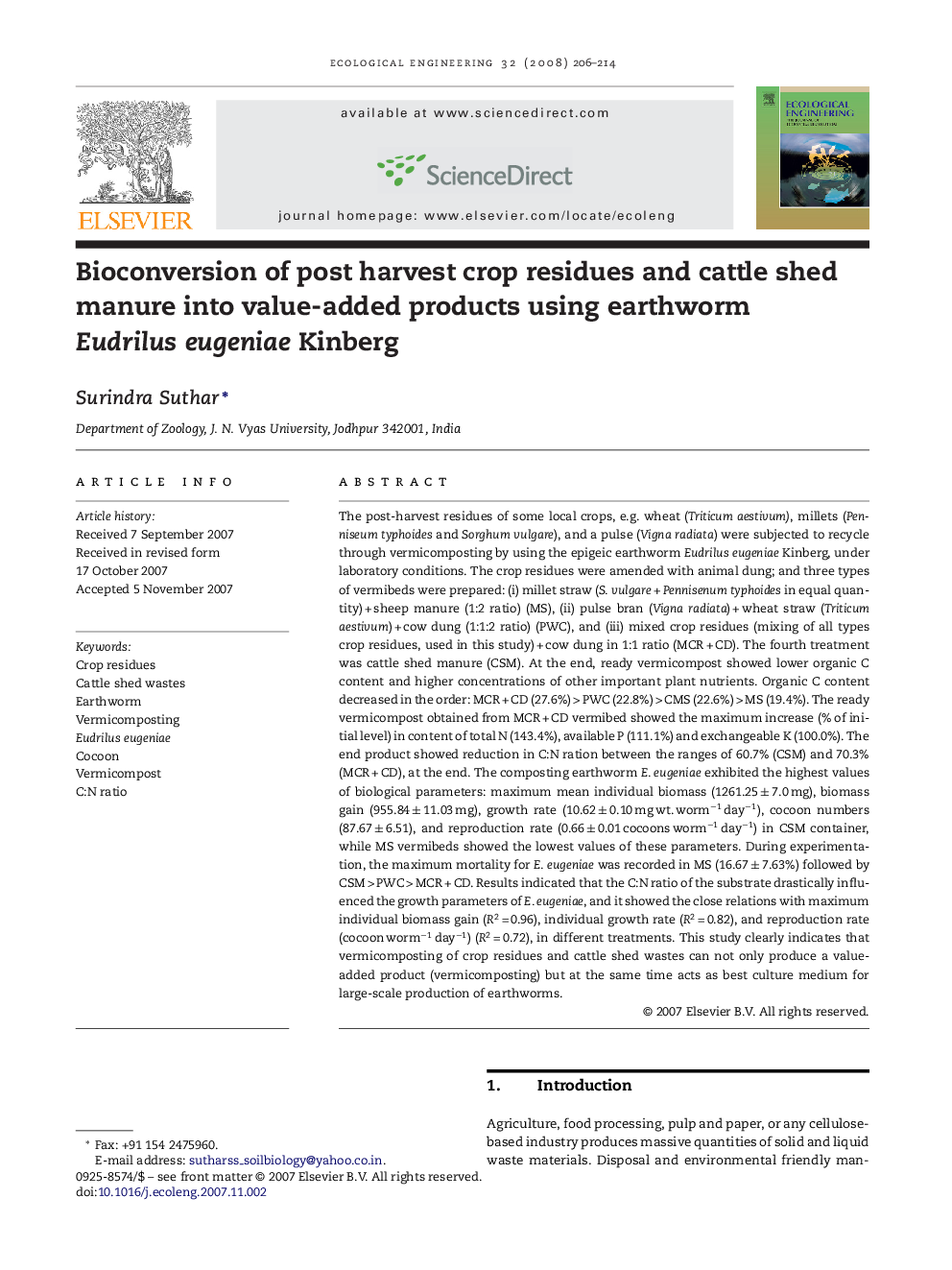| کد مقاله | کد نشریه | سال انتشار | مقاله انگلیسی | نسخه تمام متن |
|---|---|---|---|---|
| 4391000 | 1305205 | 2008 | 9 صفحه PDF | دانلود رایگان |

The post-harvest residues of some local crops, e.g. wheat (Triticum aestivum), millets (Penniseum typhoides and Sorghum vulgare), and a pulse (Vigna radiata) were subjected to recycle through vermicomposting by using the epigeic earthworm Eudrilus eugeniae Kinberg, under laboratory conditions. The crop residues were amended with animal dung; and three types of vermibeds were prepared: (i) millet straw (S. vulgare + Pennisenum typhoides in equal quantity) + sheep manure (1:2 ratio) (MS), (ii) pulse bran (Vigna radiata) + wheat straw (Triticum aestivum) + cow dung (1:1:2 ratio) (PWC), and (iii) mixed crop residues (mixing of all types crop residues, used in this study) + cow dung in 1:1 ratio (MCR + CD). The fourth treatment was cattle shed manure (CSM). At the end, ready vermicompost showed lower organic C content and higher concentrations of other important plant nutrients. Organic C content decreased in the order: MCR + CD (27.6%) > PWC (22.8%) > CMS (22.6%) > MS (19.4%). The ready vermicompost obtained from MCR + CD vermibed showed the maximum increase (% of initial level) in content of total N (143.4%), available P (111.1%) and exchangeable K (100.0%). The end product showed reduction in C:N ration between the ranges of 60.7% (CSM) and 70.3% (MCR + CD), at the end. The composting earthworm E. eugeniae exhibited the highest values of biological parameters: maximum mean individual biomass (1261.25 ± 7.0 mg), biomass gain (955.84 ± 11.03 mg), growth rate (10.62 ± 0.10 mg wt. worm−1 day−1), cocoon numbers (87.67 ± 6.51), and reproduction rate (0.66 ± 0.01 cocoons worm−1 day−1) in CSM container, while MS vermibeds showed the lowest values of these parameters. During experimentation, the maximum mortality for E. eugeniae was recorded in MS (16.67 ± 7.63%) followed by CSM > PWC > MCR + CD. Results indicated that the C:N ratio of the substrate drastically influenced the growth parameters of E. eugeniae, and it showed the close relations with maximum individual biomass gain (R2 = 0.96), individual growth rate (R2 = 0.82), and reproduction rate (cocoon worm−1 day−1) (R2 = 0.72), in different treatments. This study clearly indicates that vermicomposting of crop residues and cattle shed wastes can not only produce a value-added product (vermicomposting) but at the same time acts as best culture medium for large-scale production of earthworms.
Journal: Ecological Engineering - Volume 32, Issue 3, 3 March 2008, Pages 206–214